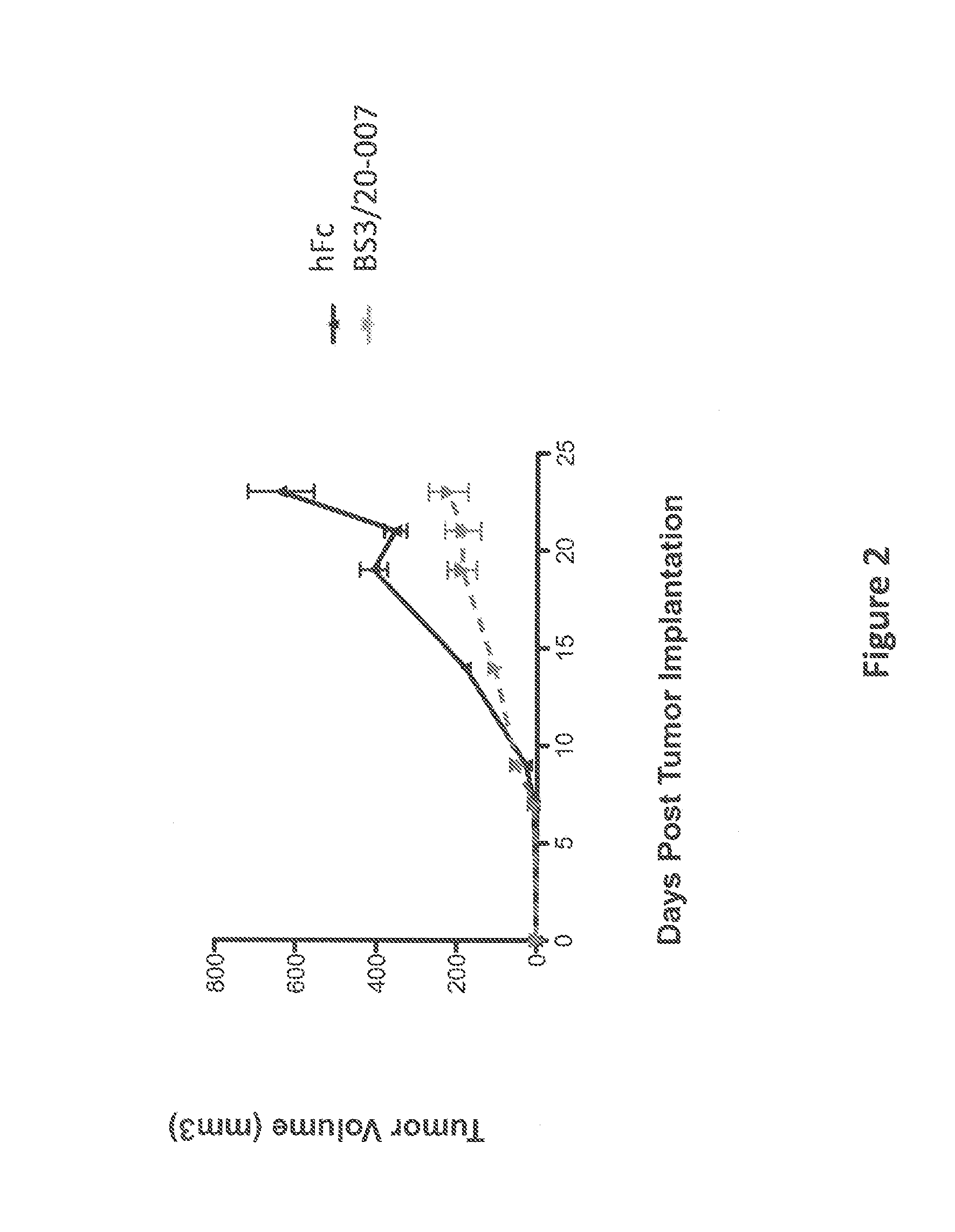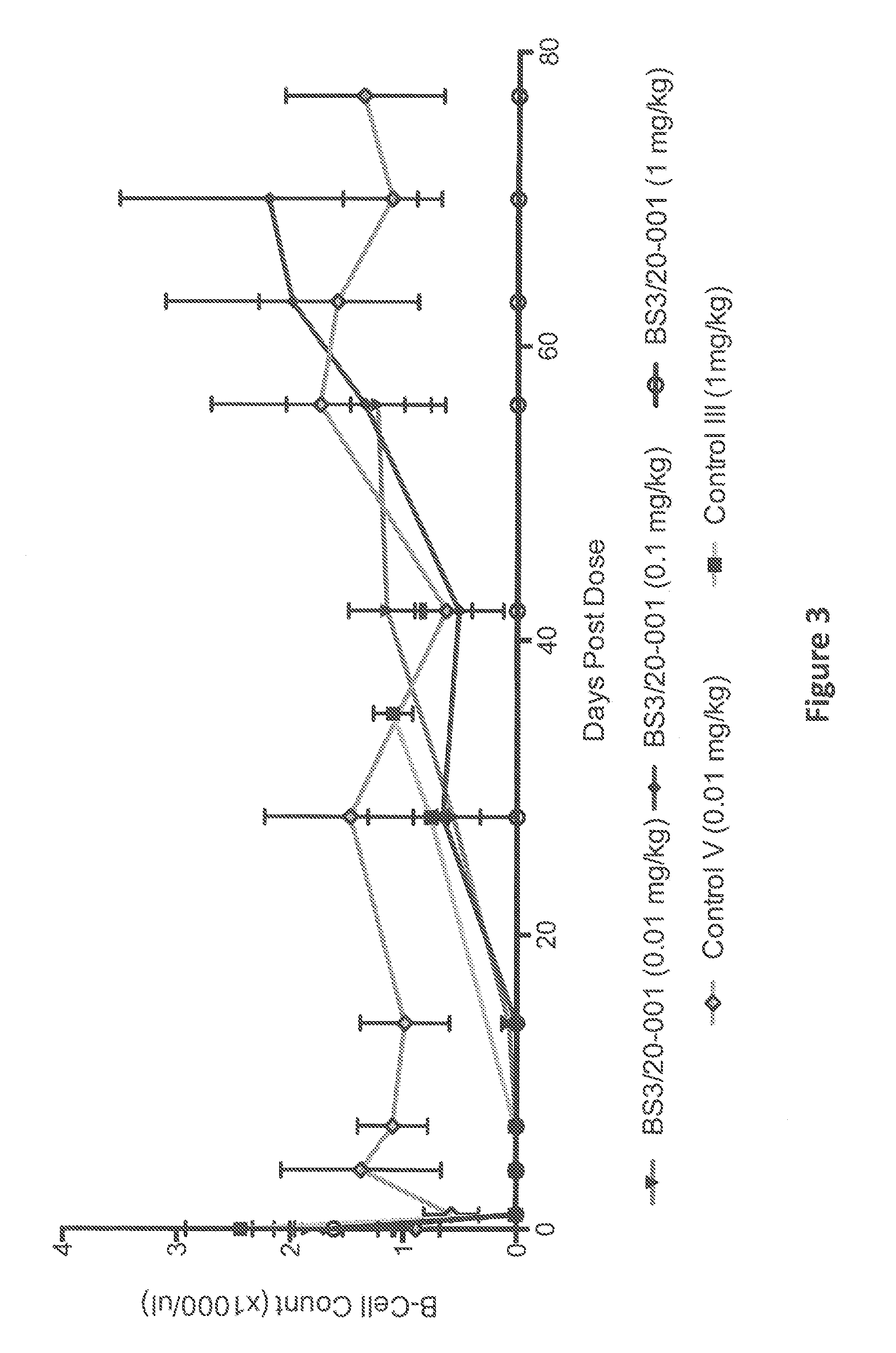Anti-cd3 antibodies, bispecific antigen-binding molecules that bind cd3 and cd20, and uses thereof
a technology of anti-cd20 and anti-cd3 antibodies, which is applied in the field of anti-cd3 antibodies and antigen-binding fragments, can solve the problems that not all patients respond to anti-cd20 therapy, and achieve the effect of facilitating directed killing (cell lysis) of the targeted patien
- Summary
- Abstract
- Description
- Claims
- Application Information
AI Technical Summary
Benefits of technology
Problems solved by technology
Method used
Image
Examples
example 1
Generation of Anti-CD3 Antibodies
[0173]Anti-CD3 antibodies were obtained by immunizing a VELOCIMMUNE® mouse (i.e., an engineered mouse comprising DNA encoding human Immunoglobulin heavy and kappa light chain variable regions) with cells expressing CD3 or with DNA encoding CD3. The antibody immune response was monitored by a CD3-specific immunoassay. When a desired immune response was achieved splenocytes were harvested and fused with mouse myeloma cells to preserve their viability and form hybridoma cell lines. The hybridoma cell lines were screened and selected to identify cell lines that produce CD3-specific antibodies. Using this technique several anti-CD3 chimeric antibodies (i.e., antibodies possessing human variable domains and mouse constant domains) were obtained. In addition, several fully human anti-CD3 antibodies were isolated directly from antigen-positive B cells without fusion to myeloma cells, as described in US 200710280945A1.
[0174]Certain biological properties of th...
example 2
Heavy and Light Chain Variable Region Amino Acid and Nucleic Acid Sequences
[0175]Table 1 sets forth the amino acid sequence identifiers of the heavy and light chain variable regions and CDRs of selected anti-CD3 antibodies of the invention. The corresponding nucleic acid sequence identifiers are set forth in Table 2.
TABLE 1Amino Acid Sequence IdentifiersAntibodySEQ ID NOs:DesignationHCVRHCDR1HCDR2HCDR3LCVRLCDR1LCDR2LCDR3H1H2712N246810121416H1M2692N1820222426283032H1M3542N3436384042444648H1M3544N5052545658606264H1M3549N6668707274767880H1M3613N8284868890929496H2M2689N98100102104106108110112H2M2690N114116118120122124126128H2M2691N130132134136138140142144H2M2704N146148150152154156158160H2M2705N162164166168170172174176H2M2706N178180182184186188190192H2M2707N194196198200202204206208H2M2708N210212214216218220222224H2M2709N226228230232234236238240H2M2710N242244246248250252254256H2M2711N258260262264266268270272H2M2774N274276278280282284286288H2M2775N290292294296298300302304H2M2776N3063083103...
example 3
Surface Plasmon Resonance Derived Binding Affinities and Kinetic Constants of Human Monoclonal Anti-CD3 Antibodies
[0178]Binding affinities and kinetic constants of human monoclonal anti-CD3 antibodies were determined by surface plasmon resonance at 25° C. using either an antibody-capture format (Tables 3, 5 and 7) or an antigen-capture format (Tables 4, 6 and 8). Measurements were conducted on a T200 Biacore instrument.
[0179]In the antibody-capture format, the Biacore sensor surface was derivatized with a rabbit anti-mouse Fc for hybridoma capture (antibody prefix H1M or H2M) or a mouse anti-human Fc surface for human IgG formatted antibodies (antibody prefix H1H). Soluble heterodimeric CD3 protein (hCD3-epsilon / hCD3-delta; SEQ ID NOs:1370 / 1371) with either a human Fc tag (hFcΔAdp / hFc; SEQ ID NOs:1372 / 1373) or a mouse Fc tag (mFcΔAdp / mFc; SEQ ID NOs:1374 / 1375) was injected over the antibody captured surface and the binding response was recorded. Heterodimeric CD3 protein was purifie...
PUM
| Property | Measurement | Unit |
|---|---|---|
| Cytotoxicity | aaaaa | aaaaa |
Abstract
Description
Claims
Application Information
 Login to View More
Login to View More - R&D
- Intellectual Property
- Life Sciences
- Materials
- Tech Scout
- Unparalleled Data Quality
- Higher Quality Content
- 60% Fewer Hallucinations
Browse by: Latest US Patents, China's latest patents, Technical Efficacy Thesaurus, Application Domain, Technology Topic, Popular Technical Reports.
© 2025 PatSnap. All rights reserved.Legal|Privacy policy|Modern Slavery Act Transparency Statement|Sitemap|About US| Contact US: help@patsnap.com



